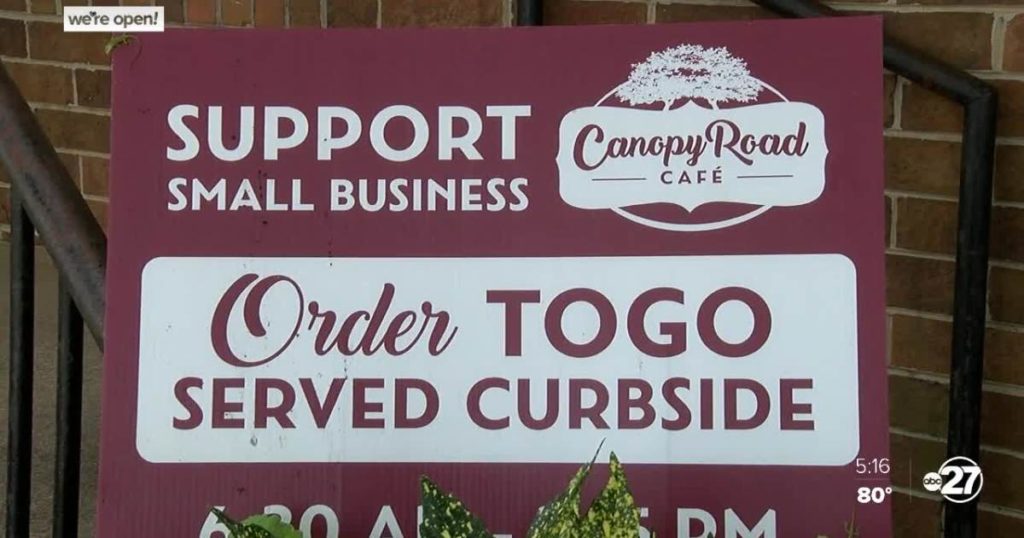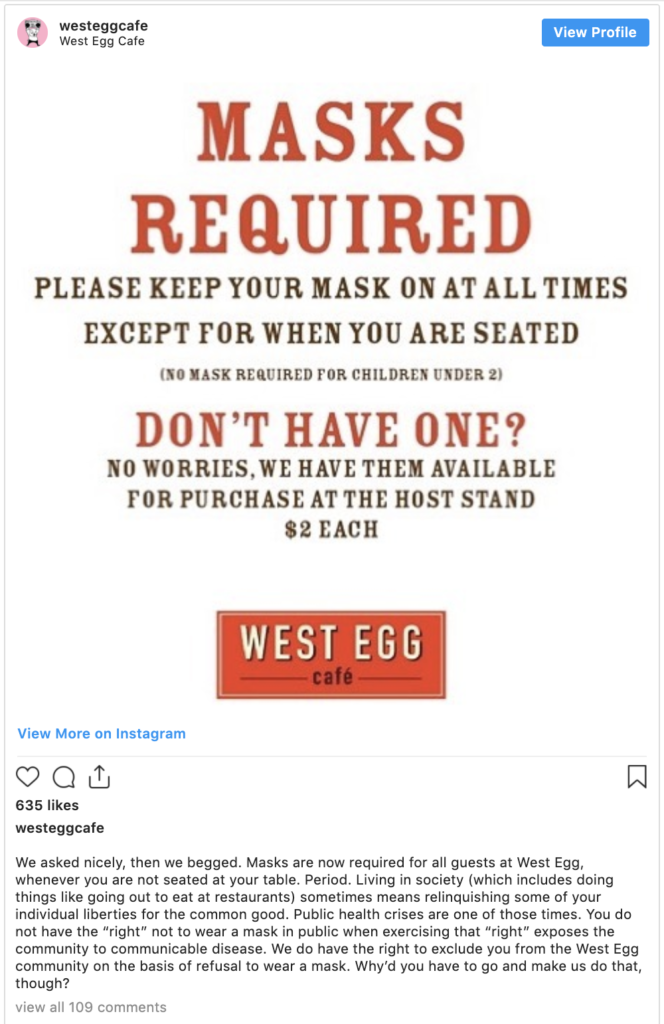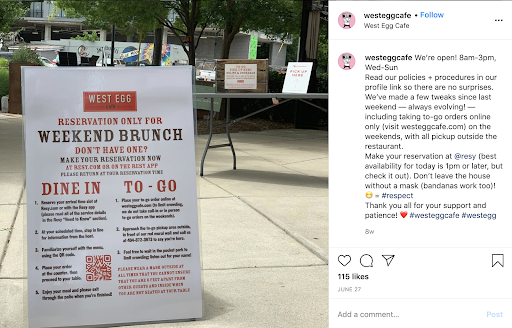Guide: How to Reopen a Coffee Shop Safely

2020 has been a truly unpredictable year, and for businesses like cafes and coffee shops, the past few months have offered more than their fair share of hurdles. Though the rules for cafes seem to be loosening in some states, the situation with COVID-19 could turn worse overnight. Throughout July, much of the country began plans to reopen, but by August, those plans quickly started reversing. Now, heading into October, 13 states are either reversing or pausing reopening plans. To reopen a coffee shop, business owners have not only the safety of their staff to keep in mind, but also customer safety and overall public health concerns.
Additionally, coffee shops are substantially changing their offerings as the way customers frequent the business is changing. With the social atmosphere of a cafe changing, people are no longer staying in cafes to work or socialize for long periods of time. Since coffee shops operate on thin margins, cafe owners are needing to sell more food products and adjust the business to adapt. In particular, smaller, independent cafes are struggling to stay afloat while larger chains like Starbucks have corporate funds to fall back on. Now more than ever, coffee shops need to embody three qualities: agility, proactiveness, and flexibility.
Enforce health safeguards for both staff and patrons
The ongoing pandemic will warrant coffee shops to continue to re-address the topic of health safeguards as the situation changes. For now, coffee shops should definitely enforce mask use for employees and customers at all times, per the CDC recommendation.
Limit the number of people in the space at the same time.
To reopen a coffee shop, business owners should determine the building’s maximum occupancy. The U.S. Fire Administration recommends to “simply calculate the area of a circle with a radius of 6 feet, which is equal to approximately 113 square feet per person.” Use this as a basic guide in accordance with your cafe’s square footage, design, and layout. Post signs on the entrance showing the maximum number of people allowed in the cafe, and have people wait outside until patrons have exited.
Rearrange & adapt spaces (both break areas and cafe space)
- Rearrange the line for the register to allow enough space in the line for 6-foot social distancing.
- If you have a smaller space, take the line outside to the sidewalk.
- Protect staff by rearranging the break room to comply with social distancing.
- Provide physical guides, such as stickers or tape on floors or sidewalks and signage, to show the flow of traffic within the cafe. This will lessen the number of times people cross paths.
- Install physical barriers — such as sneeze guards and partitions — at high contact areas like the cashier and drink counter.
- Discourage crowded lines and pickup areas by encouraging ordering through mobile apps.
- Ensure that ventilation systems operate properly and increase the circulation of outdoor air, for example, through opening windows and doors.
Limit the spread of germs
- Avoid sharing items among customers, such as receipt trays or pens, without thoroughly disinfecting first. Designate a pile of clean pens for customers and a specific spot to put used pens after.
- Install no-touch trash cans and doors.
- Place hand sanitizer dispensers at the entrance of the cafe and at registers, and ensure customers sanitize before entering the store.
- Use contactless payment as much as possible. Cash and even credit cards can be very conducive to the spreading of germs and disease. According to a 2017 study conducted in New York City, researchers found microorganisms living on the surface of cash, ranging from mouth and vaginal bacteria to flu-like viruses. eTip can help eliminate this problem by allowing customers to tip your baristas through QR codes.
- Encourage customers not to touch food and product displays.
Tips for keeping your coffee shop clean & sanitized
On top of reducing social contact between people, maintaining a hygienic cooking and dining space is essential for public health. The following are cleaning tips that the Center for Disease Control (CDC) shared:
- Daily or as much as possible, clean and disinfect frequently touched surfaces like work stations, bathroom stalls, door handles, etc.
- Clean commonly shared surfaces between each use like payment terminals, countertops, tables, receipt trays, and condiments.
- For cleaning products, use ones that are appropriate for each surface and meet EPA disinfection guidelines. Make sure the disinfectant remains on the surface for the recommended amount of time by the manufacturer.
- Create a disinfection routine that incorporates the above steps and train staff on proper cleaning procedures.
- Make sure that cleaning product residues are not left on surfaces, since they could cause allergic reactions or someone could accidentally ingest the chemicals.
- When handling trash, use gloves at all times. Wash hands thoroughly after removing gloves.
- If disposable high-use items are not feasible, ensure that non-disposable food service items are handled with gloves and washed completely, with dish soap and hot water, or in a dishwasher. Linen items (napkins and tablecloths) should be laundered after each use. Use gloves during cleaning and wash hands thoroughly after.
Educating your cafe staff
When operating in the current environment, it is quintessential that all cafe staff are on the same page. If an employee contracts COVID-19 and continues to come to work, they are endangering their fellow employees, the cafe’s patrons, and the business’ image. Knowing this, it is crucial to lower the risks as much as possible for employees and customers, as well as enacting strict rules for employees coming to work. You may want to have employees complete a checklist before each shift that includes the following topics:
- Enforce that all employees who are returning to work after travelling get tested for COVID-19 first.
- Conduct daily health checks (e.g., temperature screening and/or or symptom checking) of staff safely and respectfully. It may be helpful to purchase an infrared thermometer for this.
- Designate a staff person for each shift to be responsible for responding to COVID-19 concerns. All staff members need to know who this person is and how to contact them.
- Encourage staff to report if anyone close to them (friends, family, roommate, etc.) has tested positive for COVID-19, and set a prerequisite that they must get tested before coming back to work.
Educating your cafe’s customers
It is everyone’s job to limit and slow the spread of the virus, and customers are no exception. When customers assume the risk to support your business, cafe owners need to be sure to promote the education of business rules and general precautions.
- Utilize signage to educate customers of ways to reduce risk
- “Do not enter if you have shown the following symptoms…”
- “Masks are required to enter this establishment”
- Show rules of the business publicly: (and be sure to post any changes to avoid mishaps)
- Spread awareness of your cafe’s rules through:
- Social media
- Website
- Signage
- Spread awareness of your cafe’s rules through:



Handling uncooperative customers
Even with signage and business rules openly displayed, some patrons might still be uncooperative and disregard the rules. In cases like this, it is recommended to stop, take a breath, and remember to act rationally. Then you can use the N.I.C.E system to handle the situation.
- N: Neutralize emotions. Employees should go into the situation with neutralized emotions so they can keep a level-head and stay rational. These encounters can be incredibly frustrating and nerve-wracking for employees to face, so neutralizing emotions and staying calm is the key to a positive outcome.
- I: Identify the type of customer you’re dealing with. Did this person have a bad day or experience that caused their acting out? Are they confused or misinformed? Are they using the outburst to try to gain something? Or are they just a bully, tyrant or impossible person? Understanding their motives can help an employee decide how to proceed with the conversation.
- C: Control the encounter. Once you’ve listened to the customer’s concerns, in the case of COVID and business rules, employees will want to make sure that the customer knows that the business rules were communicated and reiterate them if necessary. While doing this it is important to keep a slow, low, and controlled tone of voice. A calm demeanor can carry over to the customer and help them to settle down.
- E: Explore options. Even after attempting to control the situation, it is possible that alternate options will need to be discussed. Employees should be prepared to give the customer other resources, contact the manager, or even the police if the situation gets too escalated. For this step, you will want to have a talk with your team to go over the steps to take in extreme situations.
Financial resources for small businesses
Indie coffee shop culture has suffered monumentally because of COVID-19. If your cafe has taken a significant hit to revenue because of COVID-19, you may need financing to keep up with expenses. Consider these federal and state options available for small businesses:
- State financial aid resources
- Disaster assistance loans from the U.S. Small Business Administration
- Employee retention tax credit (CARES Act)
Conclusion
During these unprecedented times, the right answers might not always be totally evident for high-service businesses like cafes. Because of the ever-changing environment, cafe owners and staff need to be flexible in their accommodations and outlook, agile in responding to new developments with COVID-19, and proactive in planning for the future. If cafe owners follow these guidelines and stay prepared and alert, cafes will be a safer and more enjoyable atmosphere for staff and patrons alike.
Join the eTip community!
We'll send the latest content & special releases directly to your inbox.
Ready to join the community?
Receive the latest & greatest content from eTip, sent directly to your preferred inbox!
